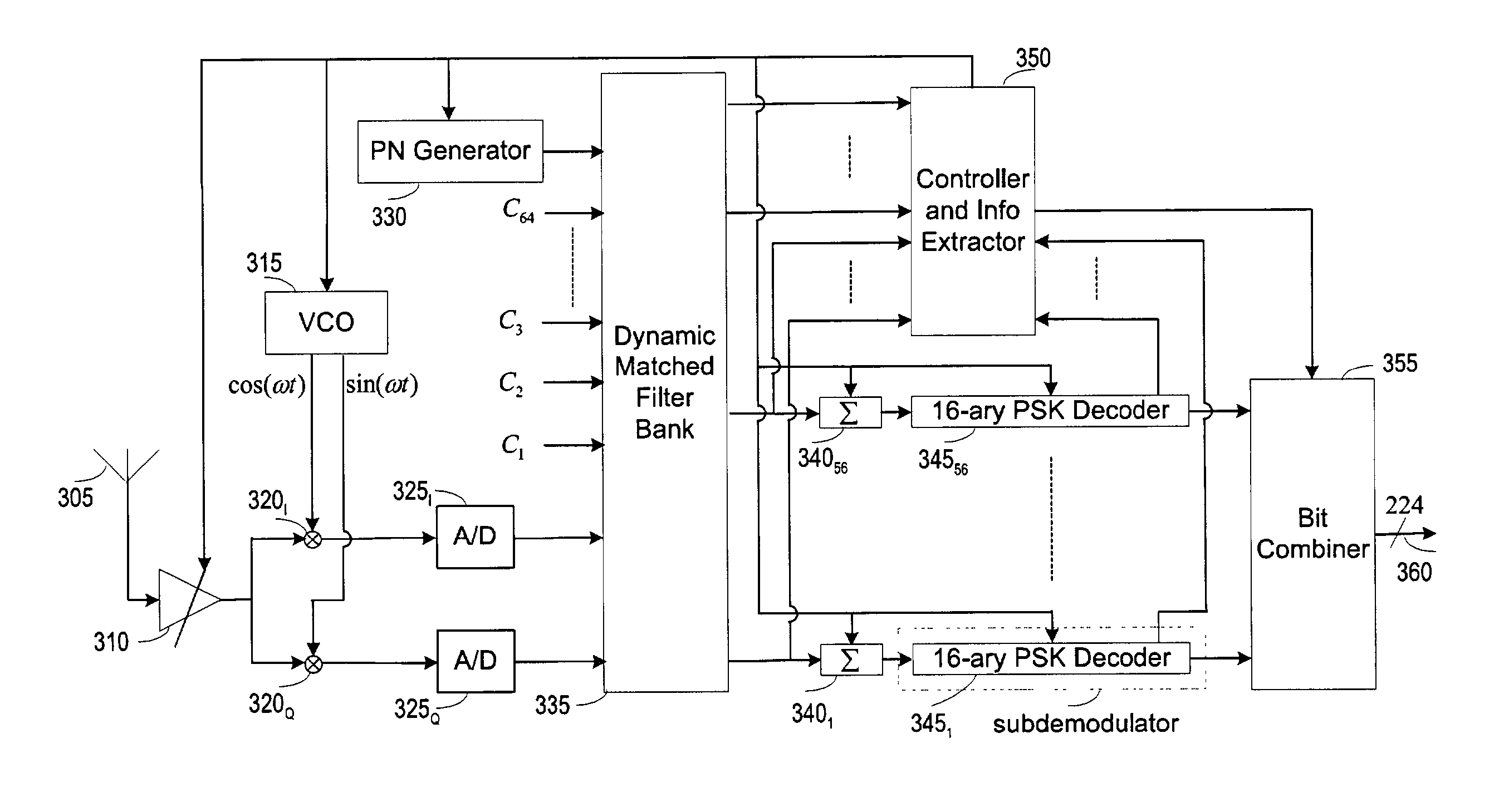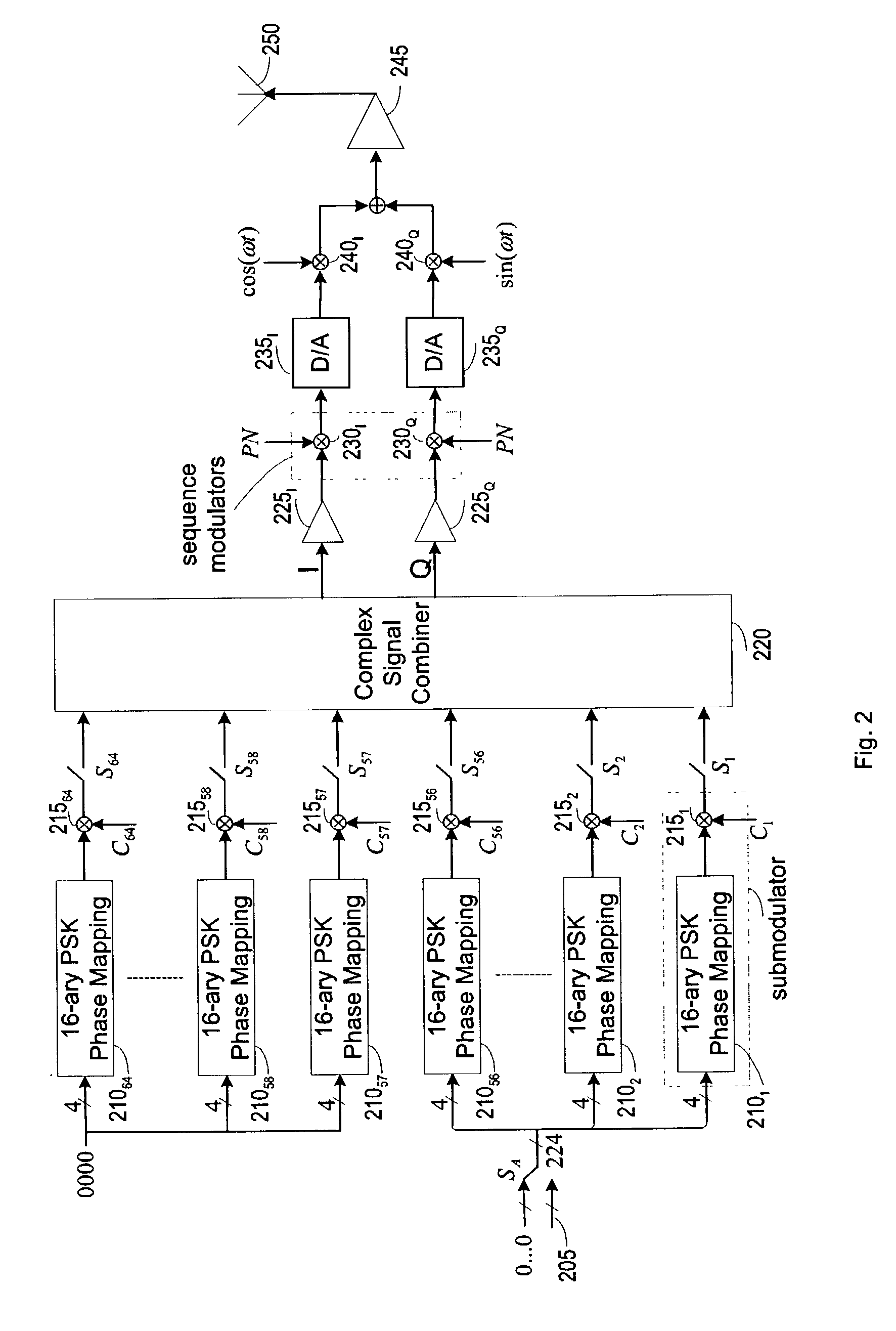Spread spectrum communication system with automatic rate detection
a technology of automatic detection and transmission system, applied in multiplex communication, radio transmission, electrical equipment, etc., can solve the problems of low spectrum efficiency, low spectrum efficiency in a regular direct sequence, and high cost and limited available bandwidth, so as to achieve flexible transmission change
- Summary
- Abstract
- Description
- Claims
- Application Information
AI Technical Summary
Benefits of technology
Problems solved by technology
Method used
Image
Examples
first embodiment
[0026] FIG. 2 illustrates a transmitter of a multi-channel direct sequence spread-spectrum communications system according to the invention. Before describing the function of each component, it may be helpful to have an overall picture first.
[0027] There are 64 spreading codes denoted by C.sub.1 to C.sub.64 and there are 64 channels each corresponding to one of the 64 spreading codes. The channels corresponding to spreading codes C.sub.57 to C.sub.64 are only used for signaling and called signaling channel for these channels will be shut off during normal data transmission. The channels corresponding to spreading codes C.sub.1 to C.sub.56 are called data channels because these channels are mainly for data transmission even they may be used for setting up AGC and assisting signaling.
[0028] The channel corresponding to spreading code C.sub.1 is called channel i , where 1.ltoreq.i.ltoreq.64.
[0029] The transmitter can transmit with its maximum transmission rate at 224 bits per symbol pe...
second embodiment
[0048] FIG. 4 illustrates a transmitter of a multi-channel direct sequence spread-spectrum communications system according to the invention.
[0049] The transmitter in FIG. 4 is similar to the transmitter in FIG. 2 and a device in FIG. 4 is just like the corresponding device in FIG. 2. The difference between FIG. 4 and FIG. 2 is that in FIG. 4, the input data bus 405 has 256 bits instead of 224 bits, and through switch S.sub.A, is divided into 64 groups instead of 56 groups. Each of the 64 groups is connected to a corresponding channel from channel 1 to channel 64.
[0050] Again assume that C.sub.1 to C.sub.56 are the 8 signaling channels. In order to support higher data rate, the 8 signaling channels will be also used for data transmission and therefore they are data channels. When there are less than 56 active data channels, one can construct signaling symbol just in the way described before. When there is a need for more than 56 active channels, one can further request that no symbol...
PUM
 Login to View More
Login to View More Abstract
Description
Claims
Application Information
 Login to View More
Login to View More - R&D
- Intellectual Property
- Life Sciences
- Materials
- Tech Scout
- Unparalleled Data Quality
- Higher Quality Content
- 60% Fewer Hallucinations
Browse by: Latest US Patents, China's latest patents, Technical Efficacy Thesaurus, Application Domain, Technology Topic, Popular Technical Reports.
© 2025 PatSnap. All rights reserved.Legal|Privacy policy|Modern Slavery Act Transparency Statement|Sitemap|About US| Contact US: help@patsnap.com



